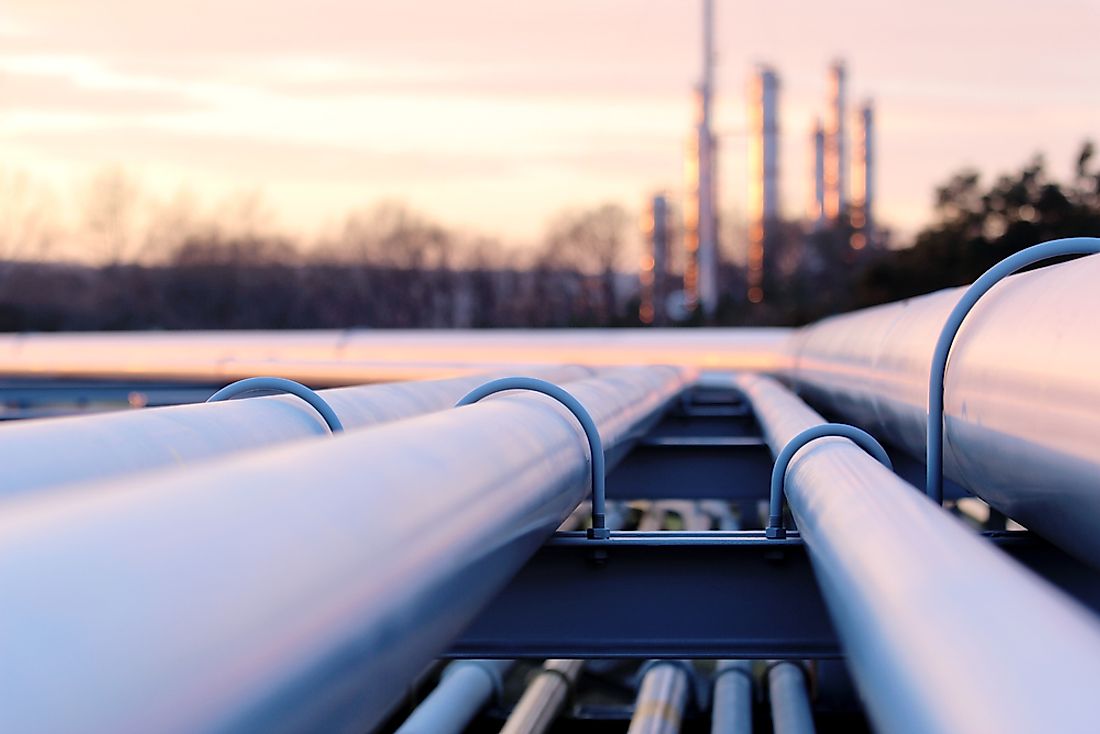How Do Pipelines Work?

Pipelines are a mode of transport used to ferry goods from one location to another. Pipeline transport is primarily used for the transportation of liquids and gasses, including the transportation of oil and natural gas. It is estimated that there are over 2.1 million miles of pipelines all over the world with the majority of the pipeline network being in the United States, Russia, and Canada. These three countries alone account for about 75% of the global pipeline network.
Types of Pipelines
Pipelines can be categorized according to the purpose they serve and are divided into three groups: transportation pipelines, gathering pipelines, and distribution pipelines. Transportation pipelines are used in the transportation of fuels along long distances and involve pipes with huge diameters. Distribution pipelines are used in the transportation of fuels to the consumer and involve the use of small pipes usually with a diameter of 24 inches. Gathering pipelines are used in the transportation of crude oils and natural gasses from wells to nearby processing facilities.
Use of Pipelines
Pipelines have been used for hundreds of years in the transportation of liquid materials, particularly the transportation of drinking water as well as sewage. The use of pipelines in the transportation of water came as an alternative to the use of canals and channels which were prone to contamination and evaporation. In the 19th century, oil was discovered and soon became an integral part of the industrial revolution. The traditional form of transporting the oil was through wagons and railroads. However, these forms of transports were prone to bandit attacks. Pipeline transport offered the best alternative, and thousands of miles of pipelines were constructed to ferry the oil from the oil rigs to refineries and to transport the refined oil to consumers. The pipelines used in the transportation of oil are made of plastic or steel and are buried underground. Natural gas is also transported through the pipeline and is first pressurized lightly to form Natural Gas Liquids. The pipes used in the transportation of Natural Gas Liquids are made of carbon steel. Pipelines are also utilized in the transportation of hydrogen gas.
How Pipelines Work
Pipelines can cover long distances with some oil pipelines being thousands of miles in length. Pipelines that are made of steel and plastic are typically buried. These pipelines are placed on pre-dug trenches and are later buried with restoration work being done on the surface. Before operations begin, the pipeline is tested for leaks through water pressure or x-ray testing. The fluid being transported is pumped into the pipeline with its momentum and pressure being stabilized by pumps placed at numerous pumping stations along the distribution line. Maintenance is conducted on the pipelines periodically.
Advantages of Pipelines
Pipelines offer the most efficient mode of fluid transportation. The transportation is time saving with zero physical barriers affecting its transit. Another advantage of pipeline transport is safety with pipelines being under strict surveillance to identify any leaks in the pipe. Pipelines are also cost effective especially in the transportation of huge quantities of fluids.
Disadvantages of Pipelines
However, pipelines are not without their disadvantages. The use of pipelines poses serious environmental concern, as dangerous spills can happen. These spills can pose a serious danger to human residents and the environment alike. There are also concerns the money spend on pipelines could be better invested in renewable energy.











